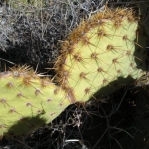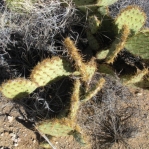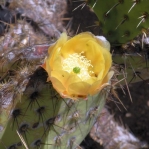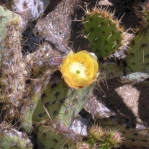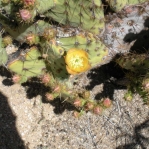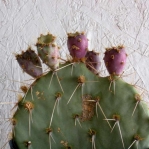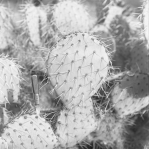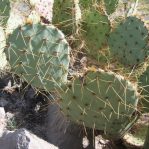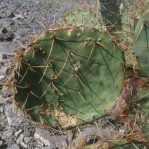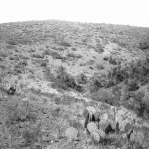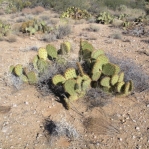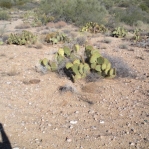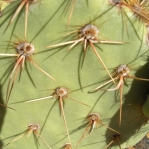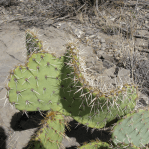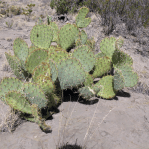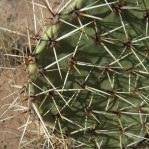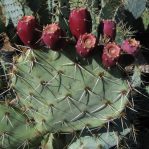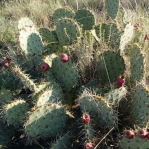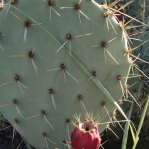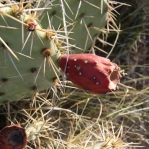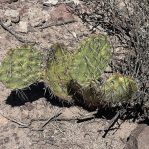
Griffiths, Annual Report of the Missouri Botanical Garden 20: 93, 1909
Holotype; Isotype; Herbarium; Herbarium; Herbarium; Herbarium; Herbarium; Herbarium; Painting (watercolor over a photograph, Krieger and Griffith, 1915, Smithsonian Institution Archive); Photograph (D Griffiths, ca. 1910); Photograph (D Griffiths, ca. 1910); Photograph (Annual Report of the Missouri Botanical Garden, 20: 1909)
Original Citation
What is Opuntia arizonica?
Opuntia arizonica is a seldom-reported species of prickly pear cactus. It is not rare but the plants are usually lumped into O. engelmannii as spiny and small specimens. There is no slot for it in guidebooks and thus is an unnoticed Opuntia. It has been found near Congress, AZ in Tucson, AZ, in central NM, and in the greater El Paso region.
Details
This prickly pear cactus resembles O. engelmannii, but it is much spinier. Additionally, this Opuntia is decidedly smaller than the large O. engelmannii. O. arizonica may be nearly prostrate or may ascend to 30-40(80) cm tall or a bit more. Plants may be 100 cm across, or they may sprawl to 2 m. Cladodes are typically 22-27(30) cm across and subcircular though obovate pads may occur. The spines are large for the pad size, stout and numerous. Spines may be reddish-brown when new but eventually fade to dirty gray on old pads. There are (2)3-4(6) spines in most areoles, erect and divergent 2-4(5) cm. The lowest ones may recurve. Areoles become relatively large in age and even up to 8-11 mm in the longest diameter on the edges of pads. The central tissue proliferates and the areoles may rise above the pad surface in a low cone. They darken with age. Sometimes the tissue of an areole may proliferate creating a raised center. Glochids may be scattered throughout the areoles, but they are most numerous in the upper portion.
Flowers are average in size and yellow. The fruit of this prickly pear is reported to be subglobose, but we have observed egg-shaped fruit.
Ploidy is not known.
Other Notes
O. arizonica was reported as a naturalized plant in the Iberian Peninsula in 2015.

